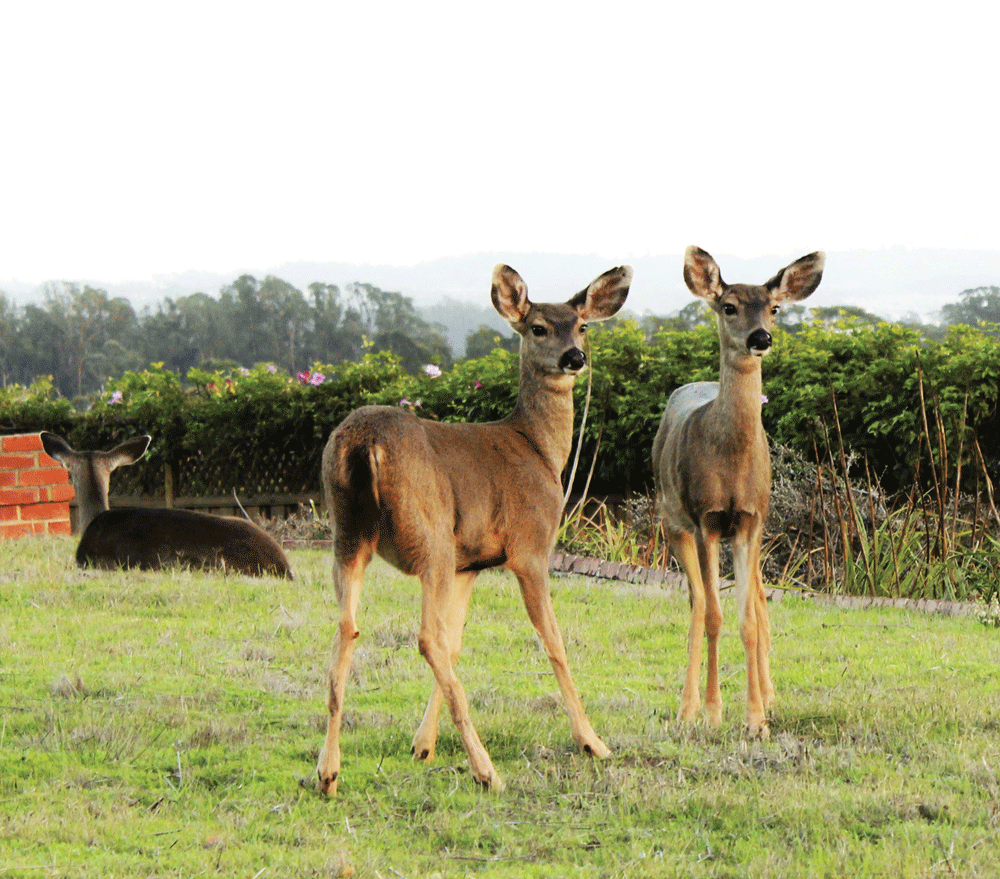EDITOR’S NOTE

A few months ago, Maria Grusauskas announced in an editorial meeting that she’d like to do a story on what makes things funny. She has a way of suggesting articles like this that makes them sound as if no one on Earth could actually write them, like the time she came to a meeting and said she wanted to do an article on trees. That’s all, just trees. My response to these ideas used to be something like “Well, that sounds a little broad,”or “That sounds more like a book than an article.”But I’ve learned that what happens is, over time, she hones these ideas down to something very specific and interesting, like how her idea about trees became her excellent story about Santa Cruz’s heritage trees earlier this year. In other words, it’s always a good idea to let her challenge herself to find the story in whatever general topic she might be obsessing over at the time. And obsess she has over the last few months—going to comedy shows, listening to podcasts, talking to comedians, and generally spending a lot of her time trying to figure out what makes people laugh, and why. The reason, she told us back then, was that she herself wanted to be funnier, and she wanted to know if that was possible to do.
What eventually came out of her quest is this week’s cover story, and once again I think she’s found the story in a way that only she can. Rather than trying too hard to be funny about being funny, it’s a thoughtful reflection on the topic that balances light and shadow in unexpected ways to explain how humor and laughter transform our world. Next story idea: the Universe?
STEVE PALOPOLI | EDITOR-IN-CHIEF
LETTERS TO THE EDITOR
Read the latest letters to the editor here.
Demand Sustainability
Re: “Paving Grace” (GT, 11/2): Ironic how J. Pierce’s article is in the same GT issue with a cover story on fires, extreme weather and our climate crisis. Pierce’s article misses how Measure D will contribute to this life-endangering crisis if passed, while not even getting us out of gridlock. D’s main focus is in increasing car capacity; all the other “green stuff” is not guaranteed. As a bike and bus commuter, I love rail trails but know that a trail and a measure that does not adequately fund bus service will not give single-occupancy car drivers a reason to stop driving. Yet counties nearby have been successful using less costly strategies to reduce traffic congestion and climate-disrupting pollution. Commuter benefits programs offered through employers eliminated millions of solo car trips and their associated greenhouse gas emissions within 12 months! It’s time to demand a truly sustainable county transportation system!
KJ Durham | Santa Cruz
Online Comments
Re: ‘Paving Grace’
This bike path could be built at a fraction of the cost, and with no taxpayer money, over removed tracks. The train is going to be very expensive, with very little benefit. We could easily build the bike path, and in the future, if people want the train back, so be it. The tracks have to be removed and replaced anyway for light rail. The RTC Commissioner, Mr. Dondero, does not have any construction experience, and came from academia straight into a government job. He is not qualified to estimate the cost of building this entirely separate road for the bike path to save an expensive train that we do not need, nor will be helpful. A brief examination by either hiking the tracks or looking at pictures will show anyone that clearing the land 100 feet wide for two roads will not only be very expensive, but extremely ugly.
— Bill Smallman
Re: ‘Paving Grace’
Does it seem a little wrong that everyone who buys any taxable good in the county for the next 30 years must pay for a highway project that mostly benefits employed people who haul three to four empty car seats up and down the highway every day during the peak commute? This is the ultimate wastefulness. Just like water, we need to start conserving our flagrant waste of fuel and highway real estate. This article does not present a balanced view of Measure D. It relies on quotes from individuals, who, despite their optimism that congestion will go away, have no expertise concerning the true outcome of highway expansion. All of the studies and all of the widening projects have shown that congestion returns. That’s because it’s not about the road, it’s about human behavior, and how we use a free resource. Those doctors will not be getting to their destinations any quicker, but a wider freeway will increase the pollution plume that flows into neighborhoods, parks, and schoolyards, and will increase the incidence of asthma and cancers in our community. It’s time that employers provide workers ways to reduce their solo driving and at least rideshare with co-workers. That would cut down on the number of cars, the amount of pollution, and the cost of transportation!
— Liz Levy
PHOTO CONTEST WINNER

Submit to [email protected]. Include information (location, etc.) and your name. Photos may be cropped. Preferably, photos should be 4 inches by 4 inches and minimum 250dpi.
GOOD IDEA
Noah Alternative
Noah Levine, who started the Mind Body Awareness Project 16 years ago, will come back to Santa Cruz to talk to the group later this month. Levine, who began his search for meaning in Santa Cruz County Juvenile Hall, later found success as the author of Dharma Punx and more recently in the band Deathless, as covered in GT (“The World’s First Buddhist Punk Band,†6/22). Levine will speak at the Louden Nelson Center at 7 p.m. on Saturday, Nov. 19.
GOOD WORK
COOK ON
Cary Coleman, reigning People’s Choice winner at the SLV Chili Cook-Off, is taking over this year as lead organizer of the event behind Boulder Creek Hardware and Joe’s Bar off Highway 9. Although not as well known as the Boardwalk’s cook-off, this year’s shindig is entering its third year and will benefit the San Lorenzo Valley Museum, which is expanding into the Belardi Church Building. The event will run from 10 a.m. to 4:30 p.m. on Saturday, Nov. 12.
QUOTE OF THE WEEK
“When you lose the ability to laugh, you lose the ability to think.â€
-Clarence Darrow












